Tapas and tranquility: Barcelona’s reinvention as the capital of chilled chic and gastronomic delight
May 13, 2025 | By Chris Noon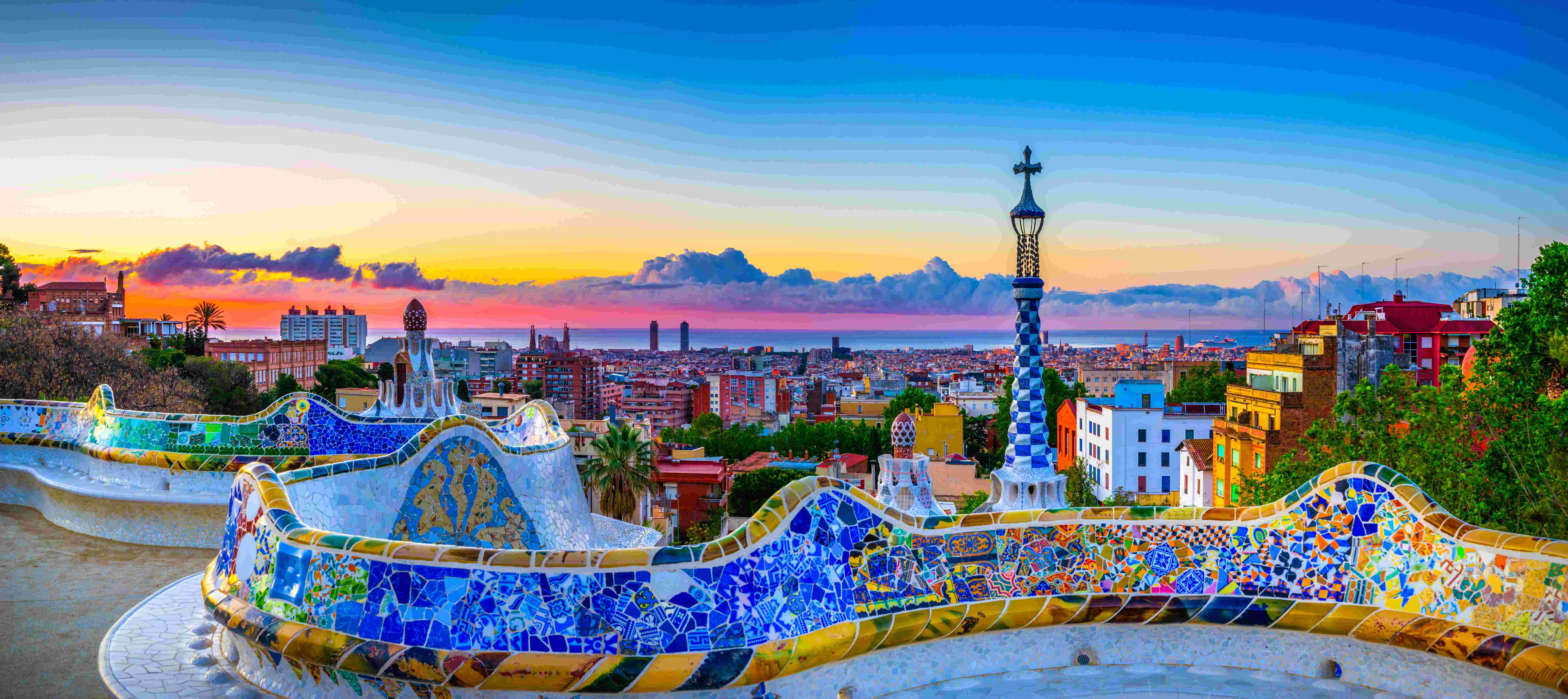
For food lovers, a trip to Barcelona’s 800-year-old La Boqueria market is a kind of pilgrimage. Every day, up to 60,000 visitors file through the market’s stained-glass portico on La Rambla, the dreamy tree-lined promenade that Spanish poet Federico García Lorca wished would never end, and step into the cathedral of Catalan cuisine.
Greeting them is a giant labyrinth made up of more than 300 stalls. Stands groan with locally grown produce: pristine, crimson strawberries, plump, wine-dark figs and bunches of sweet, porcelain-tipped scallions known as calçots, their roots still caked with soil. Jostling for space are the deli counters, which sell every olive under the sun, from green and savory Manzanillas, used in tapenades, to golden-brown, nutty Arbequinas, enjoyed as appetizers. At a neighboring charcuterie stand, a highly skilled cutter shaves huge legs of jamón Ibérico into gossamer-thin marbled slivers of ham that melt on the tongue.
At the market’s center, like an icy altar, are La Boqueria’s legendary fish and seafood counters, bearing the fruits of the Mediterranean Sea, which laps on the golden sands a stone’s throw from La Rambla. Fishmongers bustle up and down the counters, filling orders for large, creamy fillets of hake, an everyday Spanish staple, and weighing out local delicacies like red prawns from the village of Palamós and briny oysters grown in the Ebro River delta.
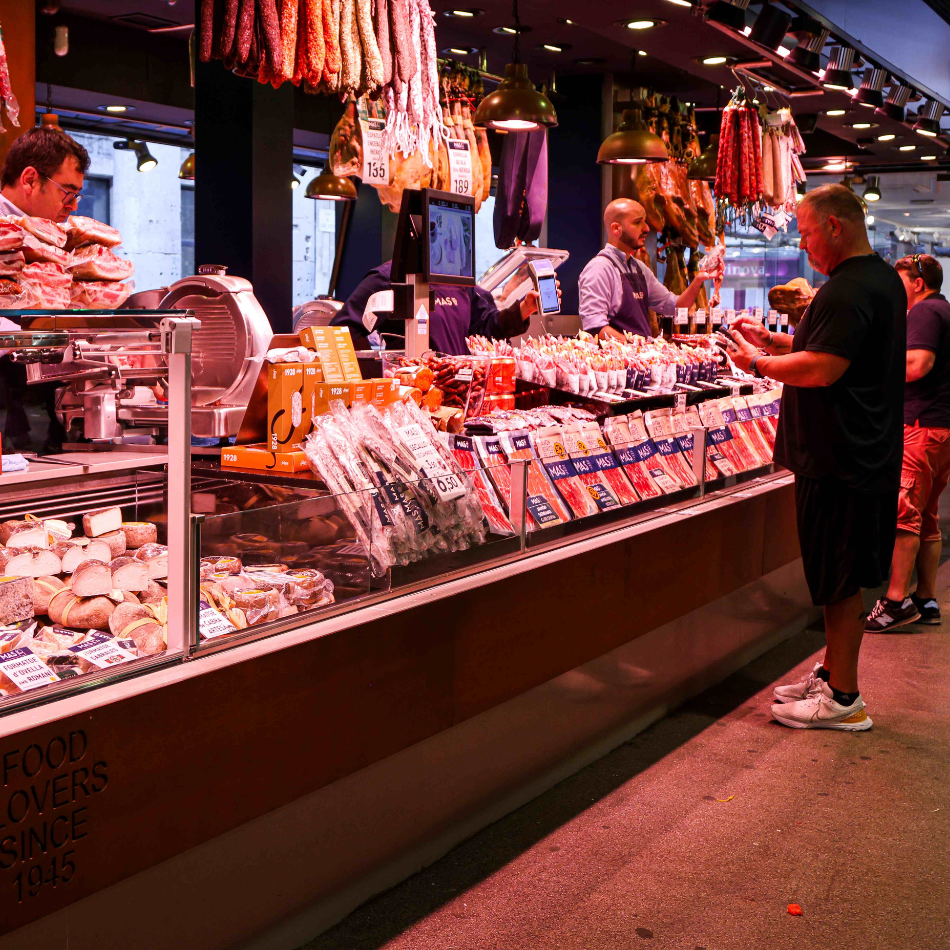

Barcelona's famed market La Boqueria opened in 1836 but open-air food stalls have had a presence in the area since the early 1200s. Today, millions of people visit the market each year. (Photo credits: Florence Godard)
For a hungry tourist, the gastronomic spectacle borders on torture. But La Boqueria, along with Barcelona’s 38 other fresh food markets, ensures that an affordable, authentic taste of the Mediterranean is available to all comers. Dotted around La Boqueria are a dozen bars and kiosks that cook up market produce into delectable tapas-size portions. Visitors can slurp six freshly shucked oysters, follow them with the finest cuts of jamón and end with a small plate of fideuà, the Catalan answer to paella: a tangle of vermicelli-style noodles, shrimp, mussels and squid, served with a dash of lemon and a kiss of silky aioli.
Gastronomic pit stops
One tourist enjoying an impromptu snack is Madeleine Wong, from Hong Kong. “I love this style of fast, casual eating,” she says as she orders a small plate of cured ham for herself and some cod croquetas for her two children. “It’s like street food, but with quality, affordability and variety,” adds Wong, who works as a vice president of operations at a gaming company.
Shira Meng, a real estate manager from Westchester County, New York, who enjoys traveling to Europe during the quieter and cooler spring months, agrees. “Clams, shrimp, snails, octopus,” she says. “You can try everything in a spontaneous way.”
There are several theories about the origin of tapas, the gourmet pit stops that are an indelible part of Spanish life. Some say that King Alfonso X of Castile in the 13th century nibbled bite-size portions of food paired with wine during convalescence and ordered the kingdom’s taverns to serve such snacks with booze. Another plausible tale involves Andalusian sherry drinkers in the 19th century, who used thin slices of bread or ham as “tapas” (covers) to stop fruit flies from entering their glasses and then devoured the edible lids.
Whatever the truth, tourists adore the centuries-old ritual. This summer, they’ll descend in millions on Barcelona’s 10,000 bars and restaurants, from the no-frills bodegas beloved by locals to the city’s 31 eateries with Michelin stars for their small-plate fix. And the city’s restaurateurs, hoteliers, drivers and shopkeepers are gearing up for yet another busy tourist season as groups of travelers are already pouring in, bouncing between Barcelona’s food meccas and its iconic architectural sites, a sign that demand for summer travel continues unabated. And the rise of digital tools, like dining and rideshare apps and mobile wallets, has made it easier than ever for travelers to commune with the city’s ancient culinary spirit.
Tourism’s new face
Later in the week, the weather turns. It’s an uncharacteristically gray and drizzly morning in Sants, a residential neighborhood tucked behind Montjuïc, the squat hill that is home to the iconic Olympic Stadium. Sants is a barrio in flux: It was once the hub of Barcelona’s textile industry, its mills spooling out millions of yards of velvet and corduroy. The looms began to fall silent in the 1960s as Barcelona entered decades of deindustrialization.
But a raft of ambitious urban regeneration projects have put Sants on the comeback trail. This includes the Jardins de la Rambla de Sants, Barcelona’s answer to New York City’s High Line: an 800-meter botanical sky garden built over the railway tracks leading to Barcelona Sants, the city’s main station. The greener, quieter streets are starting to welcome their share of Barcelona’s 15.6 million annual tourists.
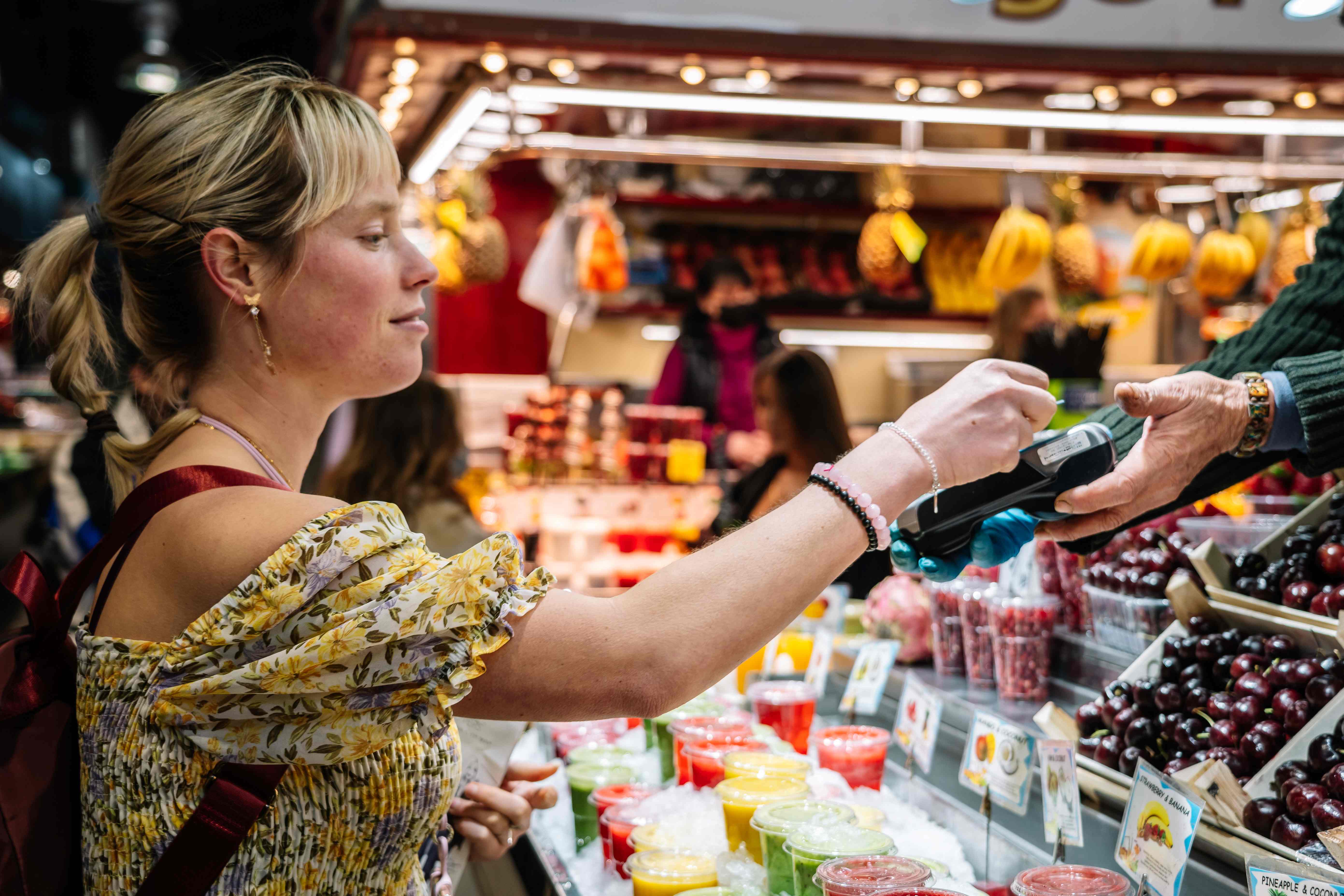
The rise of mobile wallets and tap-and-go payments has made it easier than ever to travel abroad.
Sant’s new visitors aren’t seeking out brash burger chains or loud bars, but serene, sophisticated locales like Guri, a Uruguayan-owned bistro that specializes in seasonal produce, and Wines&Copas, a wine merchant that hosts informal tastings. In 2017, Sants cemented its status as a low-key luxury destination when the Nobu Group bought a garish 1970s tower block overlooking the station and transformed the building into a sleek 259-room hotel in shades of soothing gray.
Access all areas
Emerging from the understated chic of Nobu’s neighbor, the Moxy hotel, are the Quintana brothers, Rafael and Santiago, and Marcela Guillen. They’re tourists from Guadalajara, Mexico, on the second leg of a European tour that began in Lisbon. Despite the rain, they’re on a mission to tick off Barcelona’s classic sights and then return to their Sants sanctuary.
They’re brandishing Barcelona Cards, the official tourist pass that allows free admission and queue skipping to more than 25 museums and cultural venues in the city. Their first stop will be the Picasso Museum, devoted to the Spanish artist’s early work, spread across five adjoining medieval palaces in the historic El Born neighborhood. Then they’ll wander through the Gothic streets to the Parc de Ciutadella, the 42-acres urban park that boasts a boating lake, sculpture gardens and the Cascada Monumental, a grand fountain whose decorative medallions were created by Barcelona’s most famous son, the architect Antoni Gaudí.
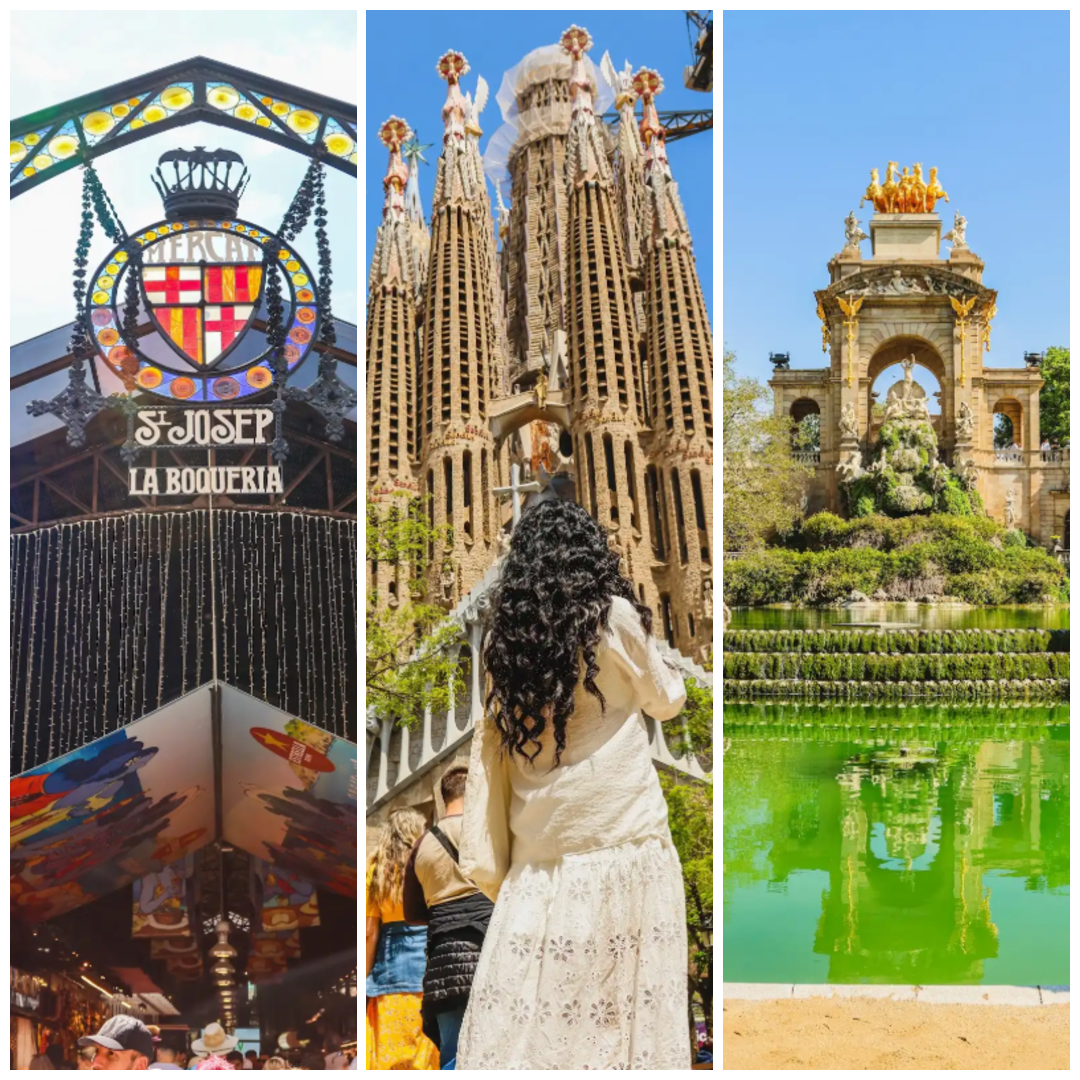
Barcelona's architectural masterpiece: La Sagrada Familia, center, stunning but still unfinished nearly a century after Gaudi's death. (Photo credit: Florence Godard)
The group have meticulously planned their daytime activities, but they’ll go with the flow in the evenings. “We might go out somewhere, like a flamenco show,” Rafael says. “But if we’re too exhausted, or it’s still cold and raining, we’ll just stay in and have food delivery like Uber Eats,” he adds. There is one non-negotiable for Guillen, and that’s Indian food. “It’s not that great back home, so I have to take advantage while I’m here,” she says.
The Mexican tourists continue onto Avenida Tarragona, one of the city’s main thoroughfares, passing a long queue of taxis. Marc, the driver of a six-seater minivan bearing the logo of Spanish ride-hailing app FreeNow, is in line for a fare. But he won’t be waiting long. “I get so much more work through it,” he says, estimating that the app accounts for around 10% of his business. “It’s also super safe and secure,” he adds. “I don’t know anything about my passengers, apart from their first name.” The conversation is cut short as Marc’s phone buzzes: It’s another FreeNow fare.
A floating palace
Marc drives off in the direction of Terminal South, one half of Barcelona’s giant port, where a floating behemoth lurks in the docks. It’s a 940-foot-long, 17-deck cruise liner that is gearing up for a weeklong, adults-only Mediterranean tour that will take in Rome and the dramatic shores of Corsica before docking in Ibiza, the Balearic Island known as the party capital of the world.
Waiting to board are Ed Simons and his wife, Eloise, who have just arrived in Barcelona from London. The couple admit that the trip is an unusual departure for them. “We normally do city breaks with the kids, so it’ll be odd being a day-tripping couple for the week,” Ed says. “But you only live once.”
He’s a little apprehensive about something else, and that’s keeping track of spending at sea. Their floating palace boasts more than 20 restaurants, including Michelin-starred-chef experiences, cocktail bars galore, spas and fitness classes. “I’ll budget in my banking app,” he says. “But I’ll keep it old school and stick to the physical card this week.”
Ed, who works in logistics, is a seasoned traveler. “I’m abroad for work quite frequently, so I’m always spending in multiple currencies and wanting to avoid fees and get a good exchange rate,” he says. “I haven’t used cash for donkey’s years,” he adds.
The couple are looking forward to letting their hair down in Ibiza and have been browsing Bandsintown, a concert discovery app that links to scores of ticket providers and booking agencies, for recommendations. “We’re actually alternative rock fans, but Ibiza is all dance and electronic,” Ed says. “So it’s going to be an experience.”
The sunshine returns to Barcelona the following morning, just in time for the Wong family trip to the world’s most beautiful uncompleted building, La Sagrada Familia. “You have all this history and amazing architecture, and the bonus of beautiful weather,” Madeleine says, gesturing at the grand facade of Gaudi’s monumental basilica.
“My kids will remember this forever,” she adds, pointing at the iconic jagged columns, which reach for the heavens like an ancient stone forest. They later catch the evening sun, which sinks below the hills overlooking the Mediterranean Sea.

Report
Travel trends 2025: Purpose-driven journeys
From yoga mats to stadium seats, discover the motivations fueling the travel economy this summer. The Mastercard Economics Institute's annual report harnesses a unique lens of spending to understand the trends that matter to consumers.
Read the report

Story
Top 5 global destinations for summer 2025
These cities showed the largest relative gains in travelers from last year, according to an analysis of flight bookings by the Mastercard Economics Institute.
Read the story

Story
From ‘om’ to ‘nom nom’: Why we’re traveling in 2025
Travelers are prioritizing meaningful experiences, from wellness retreats to off-the-grid escapes to cities with culinary cred.
Read the story
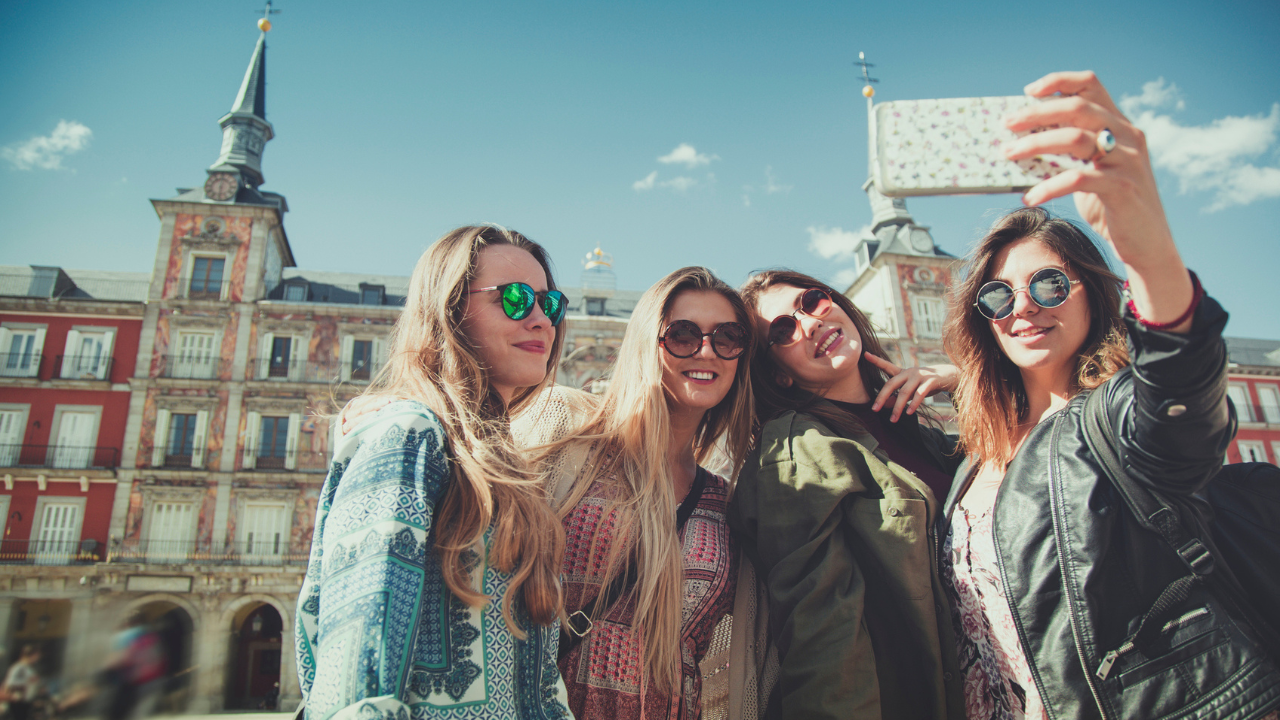
Tips
Unpack these cybersecurity tips for a stress-free vacation
Mastercard’s cybersecurity experts share tips for protecting your money, your data and your identity before you leave and while you're on the go.
Read the tips